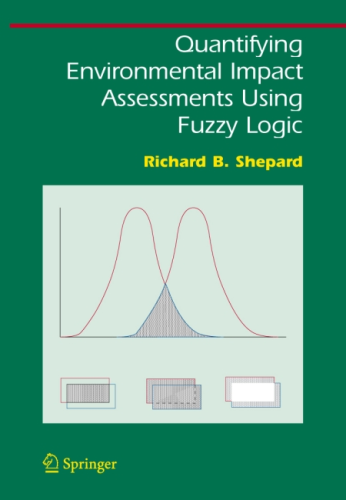-
NEPA, CEQ regulations, and agency directives describe in detail what is to be done in preparing an EA or EIS that is compliant with the law and all regulations. It does not direct staff or external contractors how each requirement is to be met. This white paper presents specific requirements and explains how the APPLIED ECOSYSTEM SERVICES’ quantitative approximate reasoning model, Eikos™ fulfills these requirements so that the results are demonstrably technically sound and legally defensible.
-
Nepa Compliance Howto
Categories: Estimated reading time: 2 minutes
When complying with NEPA requirements you benefit from submitting technically sound, legally defensible documents to regulators. NEPA, CEQ regulations, and agency directives describe in detail what is to be done in preparing an EA or EIS that is compliant with the law and all regulations. It does not direct staff or external contractors how each requirement is to be met. This blog post presents specific requirements and explains how using a quantitative approximate reasoning model, fulfills these requirements so that the results are demonstrably technically sound and legally defensible. -
Chemical standards are appropriate for human drinking water sources, but generally not for non-potable waters supporting fish and wildlife. This is because water chemistry is highly variable, measurements are isolated in time and space, and point measures are difficult to interpret as suitable for fish and wildlife. Biological-based standards of water quality are more appropriate because the presence of aquatic organisms reflect water quality integrated over time and space. Download the PDF.
-
Toxic metals and organics commonly occur in very low concentrations in water, sediments, soils, and rocks. These concentrations are so low they cannot be quantified by analytical chemists and today’s instruments. Censored data are commonly mis-analyzed with potential costly, unnecessary, or harmful results. EPA regulations and guidelines often tell data analysts to ignore (drop) censored data or substitute an arbitrary value. The results of dropping or substituting arbitrary values are wrong.
-
Nondetected Chemical Analysis
Categories: Estimated reading time: 1 minutes
Toxic metals and organics commonly occur in very low concentrations in water, sediments, soils, and rocks. These concentrations are so low they cannot be quantified by analytical chemists and today’s instruments. Censored data are commonly mis-analyzed with potential costly, unnecessary, or harmful results. EPA regulations and guidelines often tell data analysts to ignore (drop) censored data or substitute an arbitrary value. The results of dropping or substituting arbitrary values are wrong. -
Understanding relationships between organisms and their habitats is important to operators and regulators, as well as being critical to managing species with low population levels. Pacific salmon in the Columbia River system and sage grouse and Lahontan cutthroat trout in the Great Basin are among many examples where understanding the factors limiting the presence or number of individuals in a defined area need to be quantified in a technically sound and legally defensible way.
-
Natural ecosystems are complex and highly variable at multiple size scales. Because of the difficulties of accurately summarizing complexity and variability in an index number, regulators often require a reference area for comparison with a proposed or reclaimed project area. Agreement on a suitable reference area may be a requirement prior to permitting or bond-release decisions for mining and logging operations. It is common for selection of an acceptable reference area to take a long time.
-
Regulatory Data Models
Categories: Estimated reading time: 2 minutes
Natural resource companies do not object to environmental regulations that are consistent and support predictability. Consistency and predictability are critical for decision making under conditions of uncertainty. Natural ecosystems are inherently variable across a broad range of temporal and spatial scales; climate change, drought, and societal desires for sustainability make people more aware of this variability. The science used for development and enforcement of environmental regulations has not kept pace with developments in ecological theory and the analytical tools capable of describing, characterizing, classifying, and predicting natural ecosystems as well as distinguishing natural variability from anthropogenic changes. -
Environmental regulations should be based on technically sound and legally defensible data analyses that are interpreted using the best available science. This tutorial compares mathematical deterministic process models with stochastic statistical models to answer regulatory decision-making questions. The models used to support environmental regulations under conditions of uncertainty have not kept pace with our increased understanding of ecosystems and their responses to human industrial activities, nor to advances in statistics that fit the unique attributes of environmental data.
-
Regulatory science models
Categories: Natural resource companies do not object to environmental regulations that are consistent and support predictability. Consistency and predictability are critical for decision making under conditions of uncertainty. Natural ecosystems are inherently variable across a broad range of temporal and spatial scales; climate change, drought, and societal desires for sustainability make people more aware of this variability. The science used for development and enforcement of environmental regulations has not kept pace with developments in ecological theory and the analytical tools capable of describing, characterizing, classifying, and predicting natural ecosystems as well as distinguishing natural variability from anthropogenic changes.


